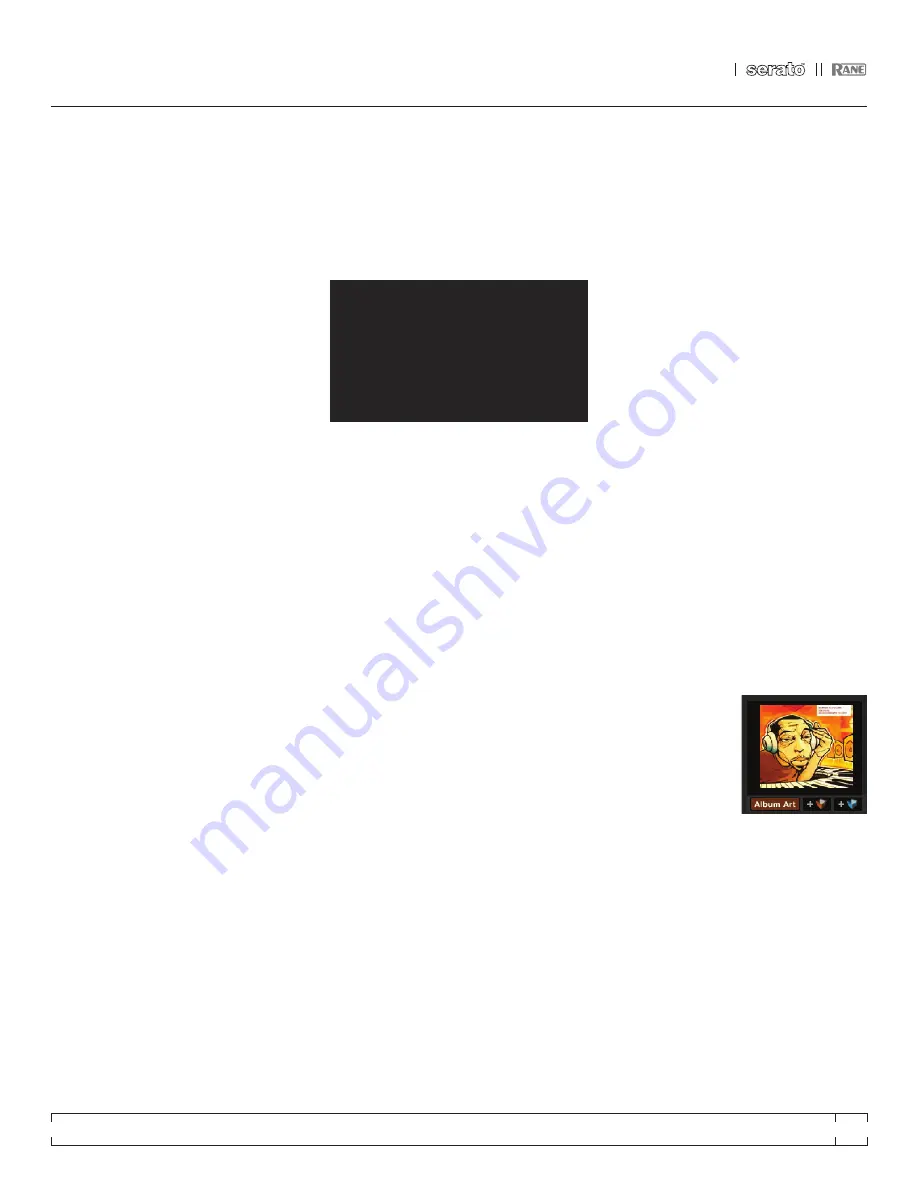
TTM 57SL
FOR
SERATO SCRATCH LIVE •
OPERATOR’S MANUAL
2.1
29
Listing Behavior -
only the tracks you
actually
play are listed in history. This is done using an
A-B algorithm, meaning a track on deck A is
only listed once the track on deck B has been
changed or ejected.
You can choose to show tracks which you
have auditioned, but not actually played, by
checking the show “unplayed tracks” box. The
session will then also list these tracks in grey,
along with actual played tracks.
Alternatively, you can mark or unmark tracks
as played manually. Select a track (or a group
of tracks) and click the mark played / mark
unplayed button. This may be useful if you play
a track off regular vinyl or CD - breaking the A-B
algorithm).
Songs that you have played are marked as
green in your library. Click on the button marked
‘clear’ to reset the list of recently played tracks
and turn the color of your library back to white.
SERATO PLAYLISTS
The Serato Playlists plugin allows you to upload
your history sessions to your serato.com profile
for viewing, sharing and editing. You can upload
your playlist once your session is complete, or
by using the Live Playlists feature to update your
playlists online in real time!
To enable this plugin, go to the Plugins tab on
the Setup screen and check the
Enable Serato
Playlists Plugin
option. Open the History panel
and you will now have access to the Serato
Playlists options.
UPLOADING SERATO PLAYLISTS
Once you have finished your session, or to
upload a previous history session, select the
desired session in the History panel. Click the
Format dropdown box, select
Serato Playlists
and click the
Export
button. You will receive the
following warning:
Warning: This feature will submit play data
from your History to your online Serato
Playlists and may affect sound card
performance while sending.
Do you wish to continue?
If you choose “Yes” you will then be taken to
www.serato.com where you can review your
playlist before choosing to post it online. Once
posted, you have the option to edit the playlist
and track information.
NOTE: We recommend that you turn off any
wireless networking devices when using
Scratch Live. If you export your playlist online
whilst playing you may experience USB
dropouts. If so, you may wish to avoid using
this function.
LIVE PLAYLISTS
Serato Playlists has the Live Playlists option to
allow you to display what you are playing online
in realtime on your serato.com profile.
To enable the Live Playlists feature go to the
Plugins tab on the Setup screen and check the
Enable Live Playlists
option. Once enabled, the
Start Live Playlist
button is now displayed in the
History panel. Click this to start and stop your
Live Playlist session.
NOTE: Live Playlists requires you to be
connected to the internet while playing,
which may result in USB dropouts. If so, you
may wish to avoid using this function.
EDITING ID3 TAGS
Much of the information associated with each file
can be edited from within Scratch Live. Double
click on the attribute within the main library to
edit the attribute. Filename, length, size, bit rate
and sampling cannot be edited. This information
is saved in the file itself. Note that the protect
library option in setup must be unchecked to
allow edits.
FOR DETAILS ON AUTO-BPM SEE
“PREPARING YOUR FILES” ON PAGE 14.
TIP: Use the keyboard shortcut ctrl-e to edit
text. Hold down the ctrl key and move with
the arrow keys to change to a different field
while staying in edit mode. When you have
more than one file selected, editing tags
changes all the files in your selection.
TIP: The second column in the library is the
label color for that file. Click it to bring up a
color palette, and customize the virtual deck
for that file.
LIBRARY zOOM
You can change the size of your library text by
using the shortcuts ctrl + and ctrl -.
DISPLAY ALBUM ART
MP3 files can contain
album art information.
Click on the show
album art button at
the very bottom left
of the screen to open
a small window. This
window displays the album art of the track
currently selected in the library.
Album art can also be shown next to the the
track information display on each virtual deck.
Click on the display tab of the setup menu to find
this option.
SEE “SHOW ALBUM ART ON DECk”
ON PAGE 36.






























